
WandaVision's opening and end credits may provide some clues to the show's central mysteries. Marvel Studios' first series on Disney+ is notably different than all that's come before it, using television sitcom tropes as a cover for what will likely be a heartbreaking story. The show's first two episodes have begun to reveal some cracks in the façade of Wanda and Vision's Westview utopia but, with seven more episodes left this season, it is only a matter of time until a bleaker reality reveals itself.
When audiences last saw WandaVision's titular heroes, things were far from peachy. In the final minutes of Avengers: Infinity War, Wanda was forced to kill Vision, who was willing to sacrifice his life to prevent Thanos from obtaining the Mind Stone. Successful in destroying the stone (and her synthezoid lover), Wanda was forced to watch him die again when Thanos, rebuilding him with the Time Stone, murdered him graphically. Unfortunately, Wanda's understandable grief was cut short when she was snapped away minutes later. However, it becomes clear in Avengers: Endgame that Wanda - now reconstituted - has a score to settle, showing off extraordinary power when dueling the Mad Titan. With her foe defeated, the audience left Wanda truly alone for the first time in her cinematic history, presumably left to cope with the trauma of losing another loved one. Therefore, piecing together her road from Avengers: Endgame to the pristine streets of Westview will certainly be a big part of WandaVision's coming story.
With so few peeks beyond Wanda's constructed reality, looking to WandaVision's various credit sequences may help to untangle the show's dangling questions. Here's a breakdown of some potential clues to what's ahead for Marvel's Odd Couple.
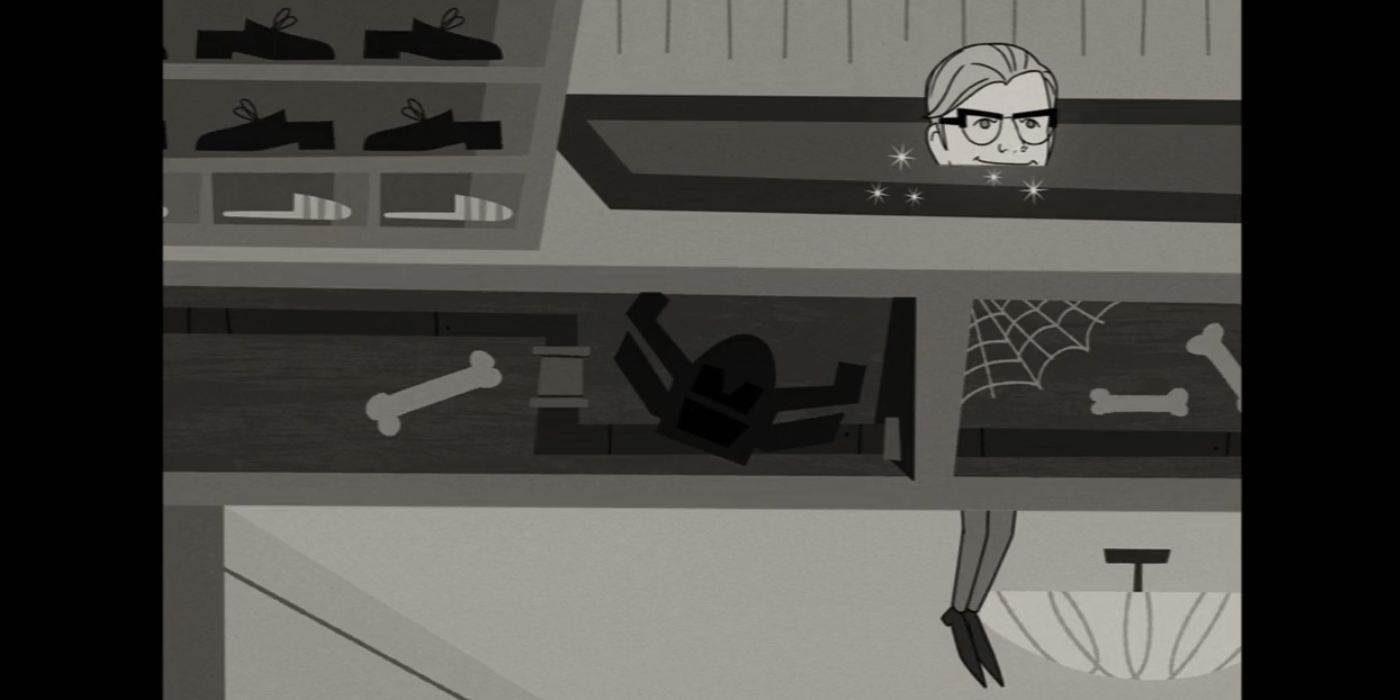
During the Bewitched-like animated sequence in WandaVision episode 2, there is a moment when Vision phases through the floor to the level below, revealing a surprising object hiding in the floorboards. A freeze frame shows the outline of a helmet that appears to be that of the Grim Reaper, a notorious Avengers villain. Prior the show's Disney+ release, there has been much speculation as to who its main antagonist would be, with many considering Mephisto the likeliest candidate. However, this revelation could point to Eric Williams a.k.a. the Grim Reaper as the real big bad.
The choice would definitely make sense, especially considering the villain's connection to Vision in the comics. The brother of Wonder Man, the Grim Reaper has on more than one occasion attempted to sway the synthezoid to villainy by tempting him with a human body, once even offering Vision the body of his deceased (but preserved) brother. Of course, the thematic resonance of having a character named "the Grim Reaper" in WandaVision is tantalizing, as Vision's return from his Avengers: Infinity War death has yet to be explained. Since the Grim Reaper's powers in the comics include necromancy, is it possible that he has somehow played into Vision's continued existence?
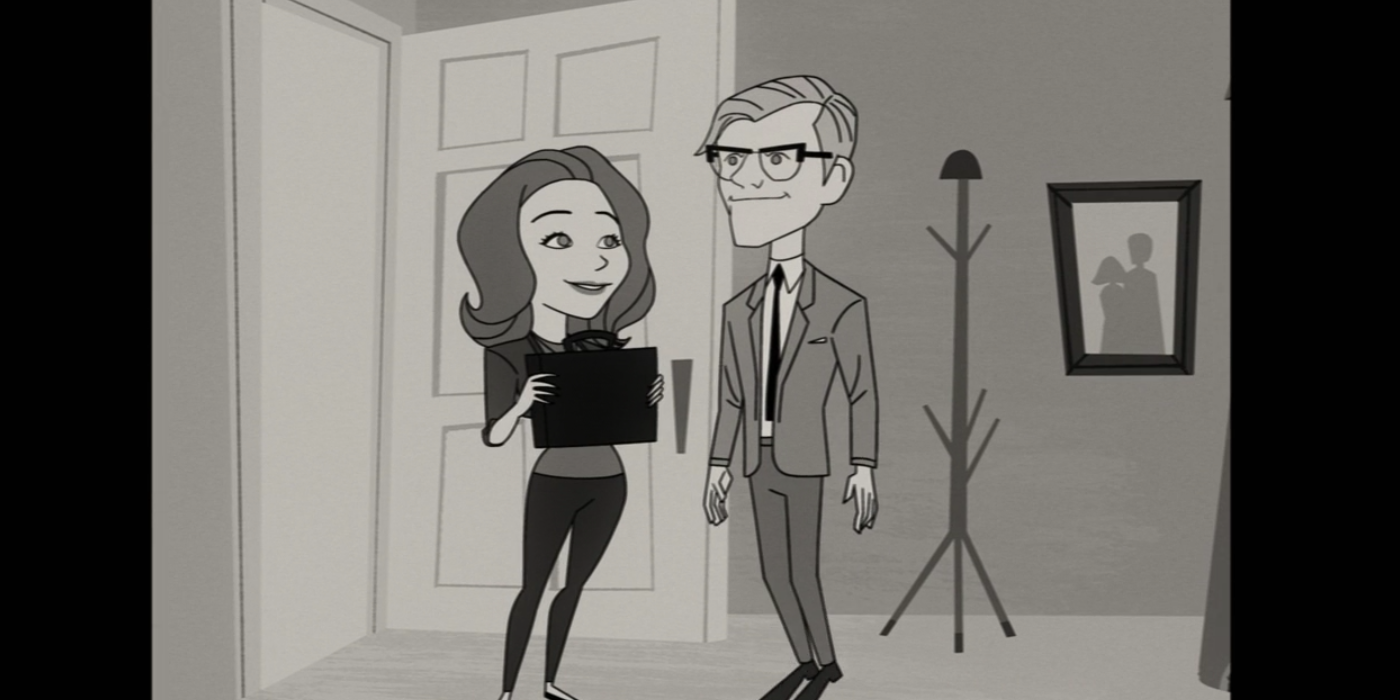
Throughout the same animated sequence, the audience sees a picture frame on the wall of Wanda and Vision's living room, which displays a silhouettes of the couple. Of course, this design choice could reflect the sequence's simplistic and cartoonish style, but it's possible it could also speak to the show's more shadowy undertones. The detail - or lack thereof - could point to the idea that what we are seeing isn't real, something that will become increasingly obvious to the show's protagonists. More importantly, if Vision really is still dead, the couple's marital bliss shown in WandaVision is nothing but a sad simulacrum.
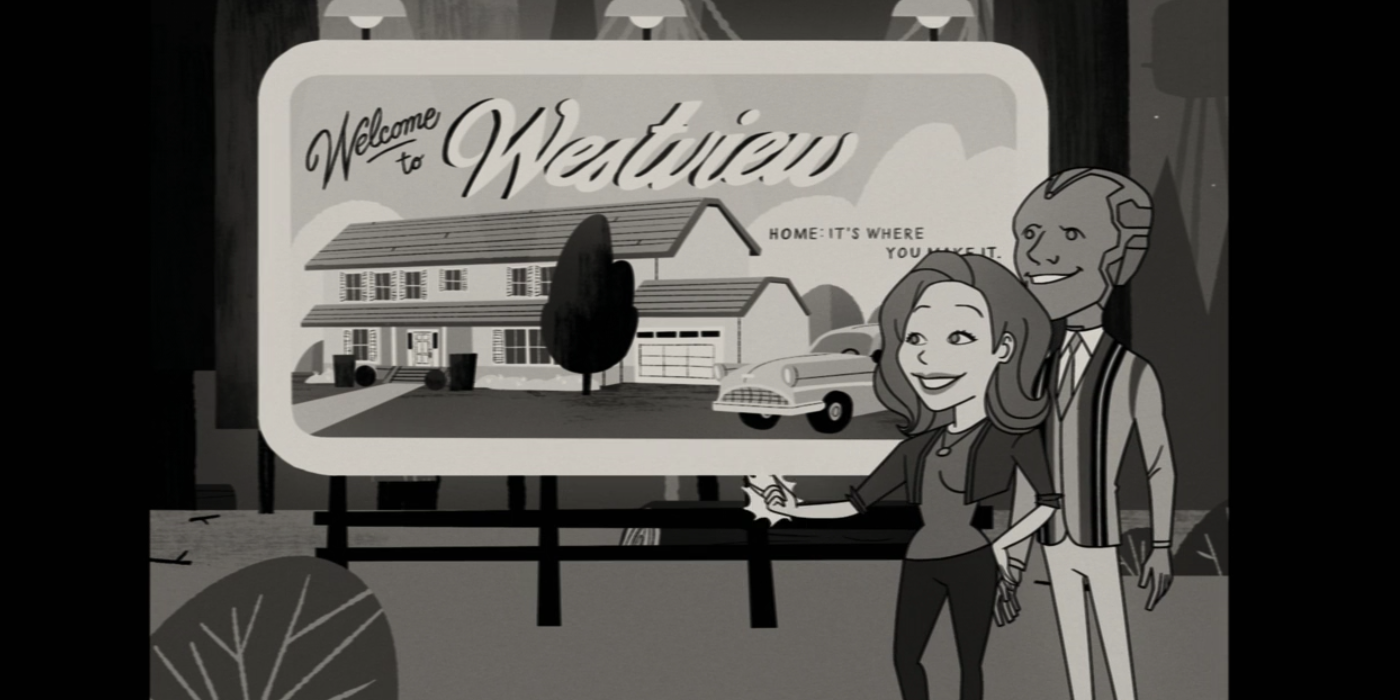
During the animation in WandaVision episode 2, the protagonists fly around their quaint town before landing in front of Westview's welcome sign. Before Wanda transforms it with her magic, the sign reads, in smaller lettering, "Home: It's Where You Make It," likely confirmation that Wanda is creating this reality herself. There have been questions regarding just how aware Wanda is of her new reality, although the incoming radio message seems to suggests that she is somehow being manipulated. However, when the beekeeper arrives near WandaVision episode 2's conclusion, it appears as though Wanda somehow rewinds the story, hinting that maybe she is in control more than the S.W.O.R.D. agents outside the Westview bubble realize.
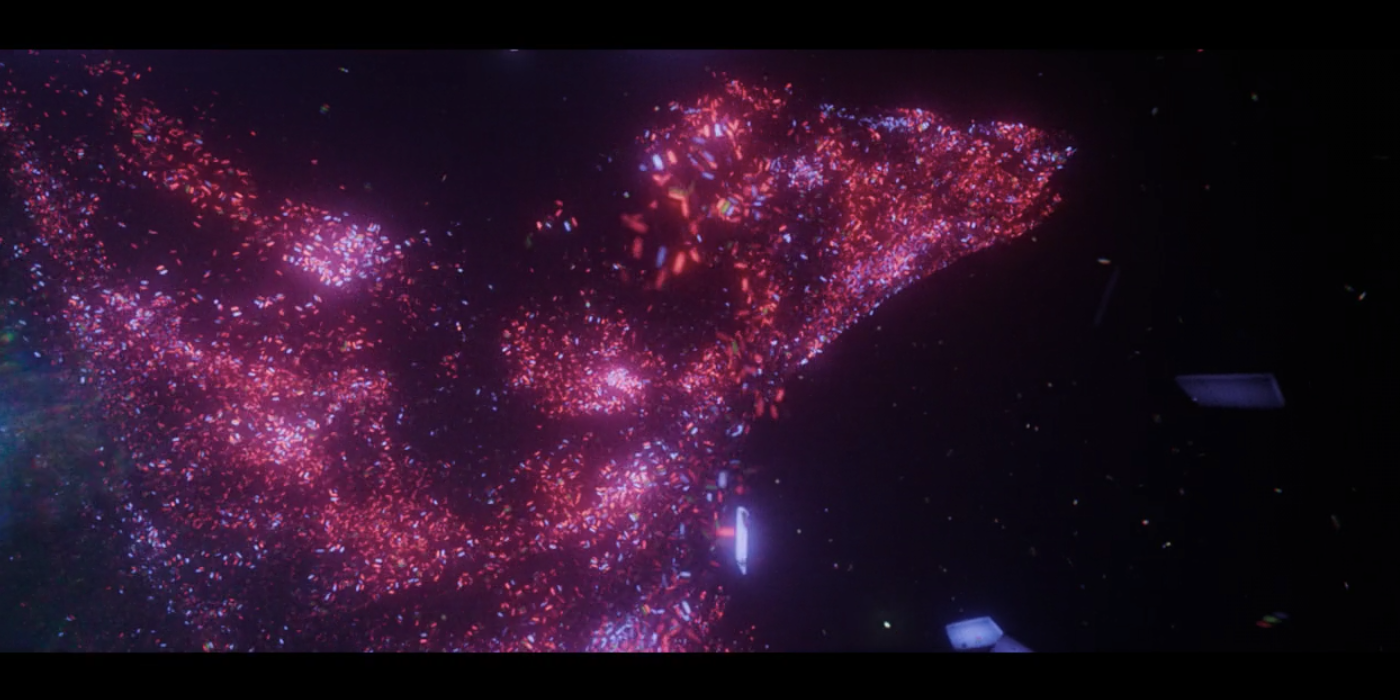
The end credits of both episodes use a strange pixel-effect, one that is incredibly reminiscent to art in Marvel Comics famous "House of M" storyline, which has been long-rumored to serve as source material for WandaVision. In the arc, a grieving Scarlet Witch rewrites the universe after learning that her children never existed, creating a world in which she can be reunited with them. When Wanda uses her reality-warping abilities in House of M (and in other recent appearances), they are often represented by small blocks reshaping the objects and people around her.
It is notable that these pixels first reveal themselves after the camera zooms in through Vision's eye, possibly hinting that he has been constructed by Wanda herself. Fans have wondered how Vision could have come back to life and Wanda using her formidable powers to rebuild loved ones is not without precedent in the comics. Perhaps Vision is really still dead and much of WandaVision's conclusion will center on Wanda's acceptance of that reality. However, considering rumors that she may serve as an antagonist in Doctor Strange in the Multiverse of Madness, the revelation may end up being a breaking point for the Scarlet Witch.
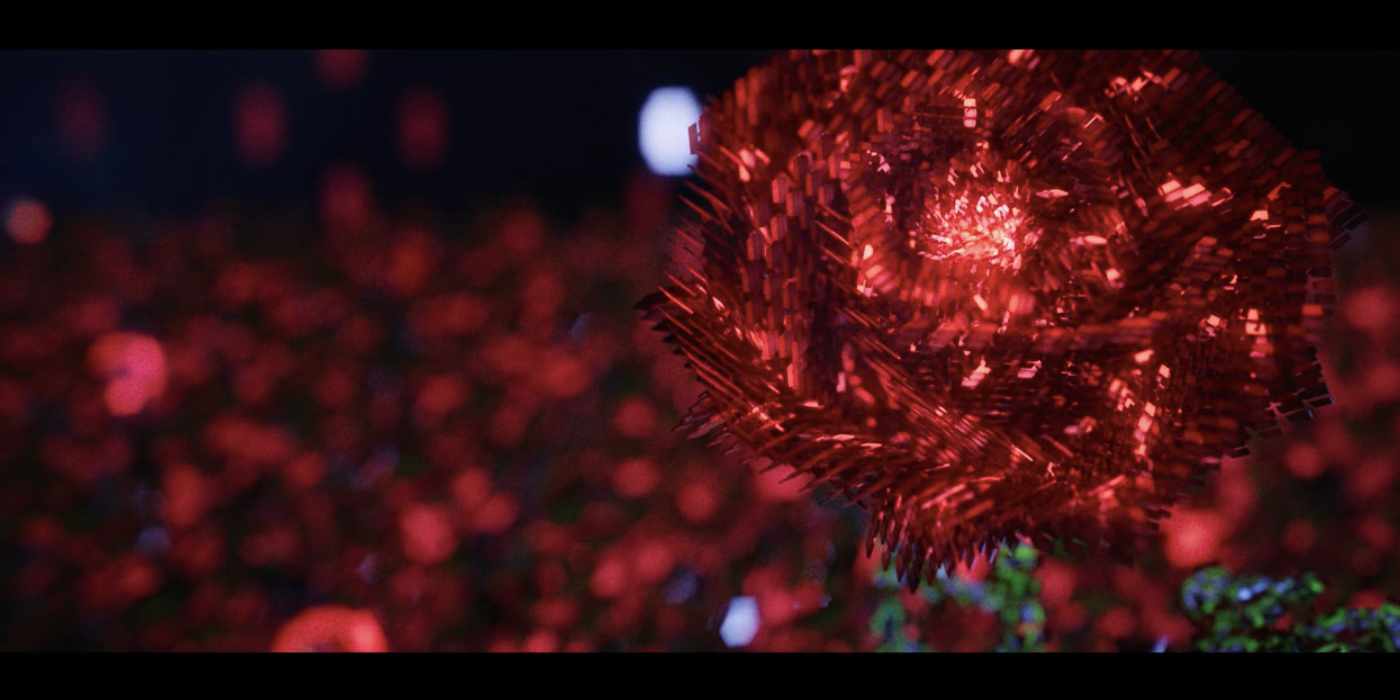
Even after only two episodes, roses have continually been present throughout the story and, therefore, it is unsurprising when we see one constructed from red pixels in the show's end credits. Roses symbolize love and romance, making it an apt choice for a show following the Avenger power couple. The color red, clearly referencing the Scarlet Witch, features heavily in the show as well, occasionally intruding on the episodes' black and white palate (with the SWORD helicopter, the toaster's flashing red light, and Dottie's blood). It is notable that roses shown in a piece of art hanging in the Scarlet Witch and Vision's living room. Roses are also featured on wallpaper in some of the show's marketing material.
Agnes also makes special note of Dottie's prize roses, saying, "Her roses bloom under penalty of death." The ominous line may provide a clue to Dottie's larger role in the overarching plot, perhaps hinting that she is the true villain of the series. If the Grim Reaper - obviously associated with "death" - really is the series' true antagonist, is it possible that he is taking the form of Westview's "Queen Cul De Sac"?
from ScreenRant - Feed https://ift.tt/38NIVEj

0 Comments